|
|
The world is a diverse and complex place, with over 8 billion people spread across every corner of the planet.
Some countries are so densely populated that it can be hard to imagine how so many people can live in such a small space, while others have vast expanses of land with only a few scattered inhabitants.
In this article, we’ll be exploring the top 10 most populous countries in the world, each with its unique history, culture, and challenges.
The population of a country not only affects its own culture, economy, and environment but also plays an important role in global affairs. This is why it’s crucial to understand the most populous countries around the world – their size, demographics, and significance on the global stage.
From the bustling cities of China and India to the tropical islands of Indonesia and the economic powerhouse of the United States, we’ll be taking a deep dive into what makes each of these countries so fascinating and unique.
Whether you’re a geography enthusiast, a travel buff, or just someone curious about the world around you, this article is sure to captivate your imagination and leave you with a newfound appreciation for the incredible diversity of the human experience.
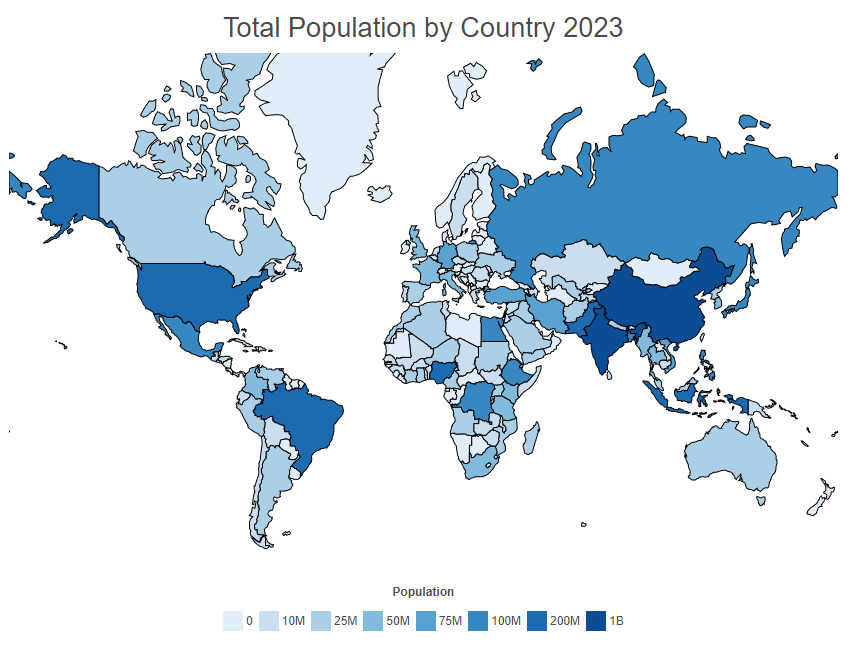
source: https://worldpopulationreview.com/countries
1. India
India has officially surpassed China as the most populous country in the world, with over 1.426 billion people as of May 2023.
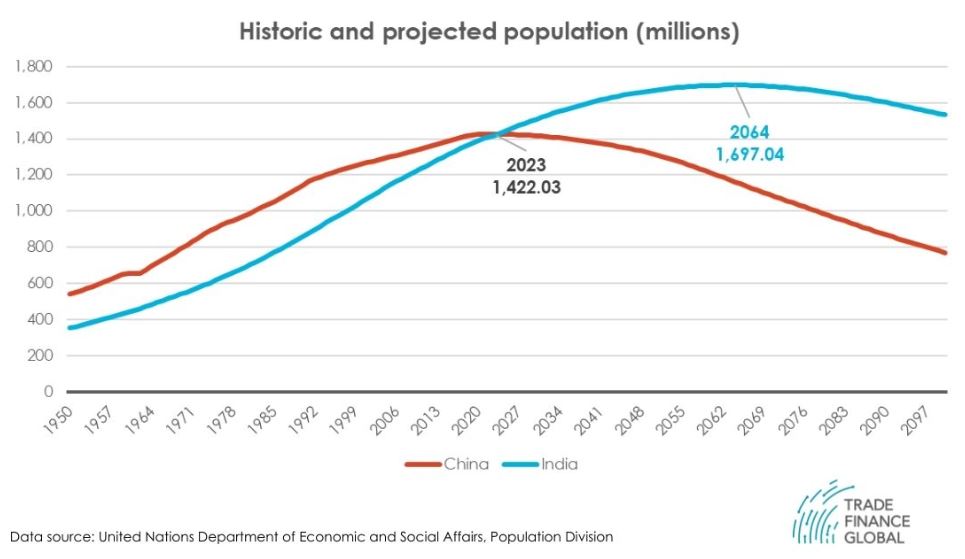
Located in South Asia, India is a land of vibrant colors, diverse cultures, and ancient traditions. From the bustling streets of Delhi to the serene backwaters of Kerala, India is a country of stark contrasts and incredible diversity.
Despite its rapid economic growth in recent years, India still faces numerous challenges, including poverty, corruption, and social inequality. The caste system, which has been in place for centuries, remains a significant issue, with lower-caste individuals often facing discrimination and limited opportunities.
However, India’s rich history and culture continue to captivate people around the world.
The country is known for its elaborate festivals and celebrations, including Diwali, Holi, and Durga Puja, which attract millions of tourists each year. India is also home to numerous iconic landmarks, such as the Taj Mahal, the Golden Temple, and the ancient city of Varanasi.
In addition, India is renowned for its contributions to science, mathematics, and spirituality. From the ancient texts of the Vedas to the groundbreaking work of Nobel laureate physicist C.V. Raman, India has a rich intellectual heritage that continues to influence the world today.
2. China
China, the world’s second most populous country, is home to over 1.425 billion people. Located in East Asia, China is a country of contrasts, with modern cities and ancient traditions coexisting side by side.
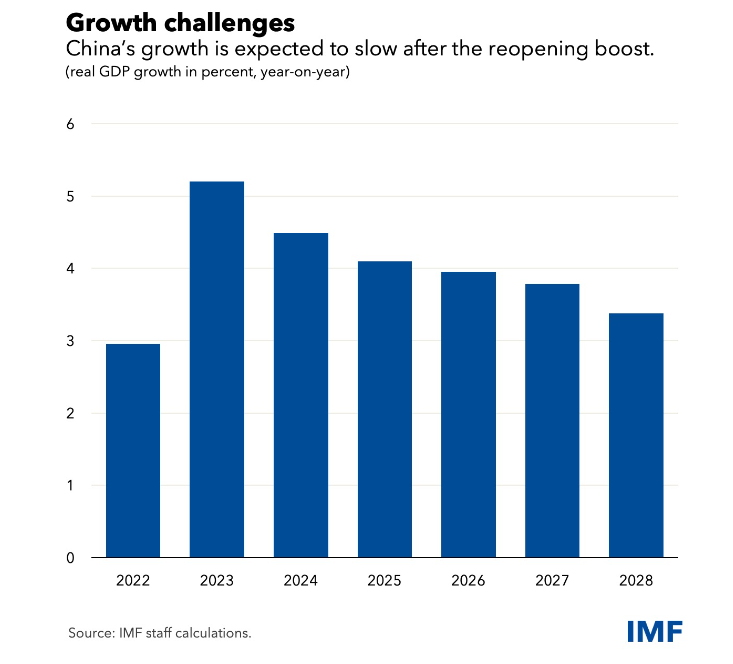
Though already slowing down, China’s economic growth has been remarkable in recent decades, with the country emerging as a global superpower. However, this rapid development has also brought with it significant challenges, including pollution, income inequality, and political repression.
Despite these challenges, China’s rich cultural heritage fascinates people around the world, just like numerous iconic landmarks, including the Great Wall, the Forbidden City, and the Terracotta Warriors.
Chinese cuisine is also renowned for its diversity and complexity, with dishes ranging from spicy Sichuanese cuisine to delicate Cantonese dim sum.
In addition, China has made significant contributions to science, medicine, and philosophy throughout its history.
Whether it’s ancient philosophers like Confucius and Lao Tzu or modern-day scientists like Tu Youyou, China’s intellectual heritage is a source of pride for its people and an inspiration to the world.
3. United States
The United States has a population of over 339 million people. It is a melting pot of cultures with a rich history shaped by immigration and diversity.
The United States is the world’s largest economy and a leading superpower, with significant influence in global politics, technology, and culture. Sadly, the country still faces numerous challenges, including social inequality, political polarization, and systemic racism.
The United States is known for its stunning natural beauty – the towering peaks of the Rocky Mountains, the sun-kissed beaches of Florida, and the awe-inspiring beauty of Yosemite National Park are just a few of its famous attractions.
Its famous landmarks include the Statue of Liberty, the Golden Gate Bridge, and Mount Rushmore National Memorial.
American culture has had a significant impact on the world; Hollywood movies, rock and roll music, and fast food chains need no explanation. Its contributions to science and technology are not to be omitted, with the moon landing and the creation of the internet being the most prominent.
However, the country’s political climate remains polarized, with significant divisions between the two major political parties. This has led to a growing sense of disillusionment among many Americans, who feel that their voices are not being heard by the government.
4. Indonesia
Indonesia has over 277 million people spread across its many islands. Located in Southeast Asia, Indonesia is a land of stunning natural beauty, like the turquoise waters of Bali or the majestic volcanoes of Java.
Despite its natural beauty, Indonesia is also struggling with significant issues, including political instability, poverty, and environmental degradation. The country is also known for its complex history of colonization and cultural blending, with influences from Indian, Chinese, and European cultures.
Indonesia’s rich cultural heritage is evident in its architecture, music, and cuisine. From the towering temples of Borobudur to the haunting melodies of the gamelan orchestra, Indonesia is a country of incredible diversity and depth.
It is also a major player in the global economy, with significant reserves of natural resources, including coal, natural gas, and palm oil. However, this economic growth has also come at a cost, with significant environmental damage caused by deforestation and pollution.
Indonesia remains a fascinating country with a rich culture and history worth exploring.
5. Pakistan
Pakistan, with over 239 million people, has a rich cultural heritage shaped by its long history of trade and conquest.
The country is predominantly Muslim, and Islam plays a significant role in its culture and society. However, there are also numerous ethnic and linguistic groups, each with its own unique traditions and customs.
Pakistan’s history is one of political instability, with numerous military coups and a long-standing conflict with India over the disputed region of Kashmir. Poverty, corruption, and terrorism remain significant problems, with some parts of the country still experiencing violence and unrest.
Pakistan also boasts stunning natural beauty, including the majestic peaks of the Himalayas and lush green valleys in northern Pakistan. Numerous cultural attractions, such as Lahore’s Mughal-era monuments and Karachi’s cosmopolitan nightlife, continue to draw visitors from around the world.
6. Nigeria
Nigeria, located in West Africa, has a population of over 223 million people. The country is a land of incredible diversity, with over 300 ethnic groups and 500 languages spoken across its many regions.
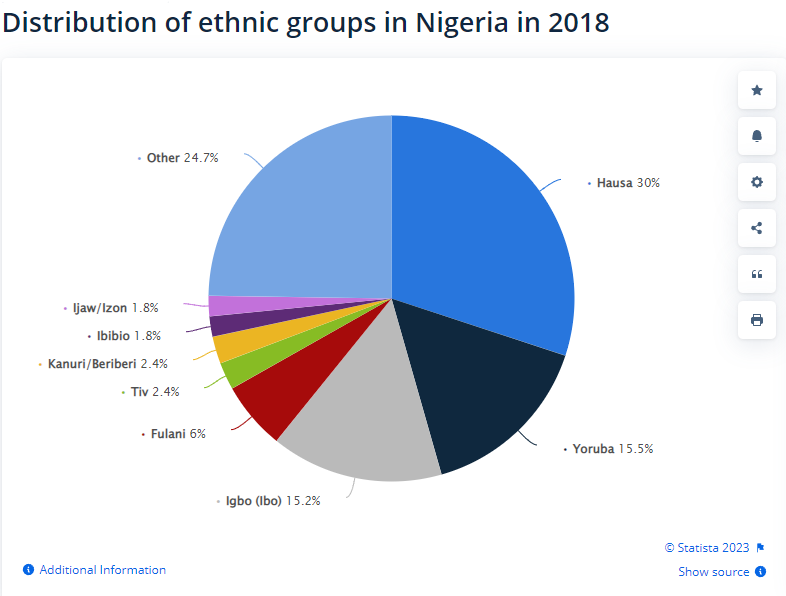
source: https://www.statista.com/statistics/1203438/distribution-of-ethnic-groups-in-nigeria/
Despite its vast natural resources, Nigeria remains one of the poorest countries in the world. The country has suffered from years of political instability and corruption, with poverty and inequality rampant throughout much of the population.
Colonialism and foreign intervention have also had an enduring impact on the country’s history, with many of its people still facing discrimination and hardship.
However, Nigeria is also a land of great potential. The country has a vibrant cultural scene, with numerous festivals and celebrations throughout the year. Nigerian cuisine is also renowned for its unique flavors and spices, while music from artists like Fela Kuti continues to charm people around the world.
7. Brazil
Brazil, located in South America, is the seventh most populous country in the world, with over 216 million people.
The country has a rich cultural heritage shaped by its mix of African, European, and Indigenous influences. From samba music to Carnival celebrations, Brazilians have a passion for life that fascinates visitors from around the world.
Natural beauty is one of the main attractions of Brazil, with stunning beaches, lush rainforests, and majestic waterfalls. You can also explore the lively cities of Rio de Janeiro and Sao Paulo, which are home to some of South America’s most iconic landmarks, including the Christ the Redeemer statue and Sugarloaf Mountain.
Despite its immense potential, Brazil is still struggling with significant problems, such as poverty, crime, and environmental degradation. The political scene is also highly polarized, with the country bitterly divided over numerous issues.
8. Bangladesh
Bangladesh, with a population of 172 million people, is the 8th most populous country in the world.
Though largely rural and agrarian, Bangladesh is rapidly modernizing due to economic growth driven by manufacturing and service industries. In addition to its vibrant cities like Dhaka, the country also boasts stunning natural landscapes such as Sundarbans National Park – home to iconic Bengal tigers – or tranquil tea plantations dotting rolling hillsides.
Despite these advances, however, Bangladesh is not without its problems. Poverty, pollution, and inequality are rife throughout the country. The threat of natural disasters such as cyclones and floods is ever-present.
Bangladesh’s culture also has a unique influence – from its dynamic cuisine to its intricate weavings. Whether it’s observing colorful festivals or visiting ancient mosques, Bangladesh offers something truly special for those looking for an off-the-beaten-path experience in Asia.
9. Russia
Russia has over 146 million people living within its vast expanse of land, making it the 9th most populous country in the world. Located between Europe and Asia, Russia has been at the crossroads of world history for centuries.
Russia is a land of majestic beauty, from the frozen tundras of Siberia to the rolling hills of the Ural mountains, from St. Basil’s Cathedral in Moscow to the colorful domes of St. Petersburg’s churches.
Though this beauty is undeniable, Russia is a problematic and controversial country plagued by numerous issues. Crime and corruption remain widespread, while the political scene has been dominated by strongman leaders like Vladimir Putin for many years.
Russia still has much to offer the intrepid traveler. From cultural treasures such as ballet and classical music to iconic landmarks like the Kremlin or Red Square, Russia will captivate your imagination with its grandeur and history.
10. Mexico
Mexico is the 10th most populous country in the world, with over 128 million people. This North-American country has a rich cultural heritage that blends Native American and Spanish influences.
Mexico City is one of the most populous cities in the world and a major global hub for culture and tourism. From the ancient ruins of Teotihuacan to the vibrant murals of Diego Rivera, Mexico City offers a wealth of attractions that are sure to captivate any visitor. However, this is only the beginning – the country offers stunning landscapes, unique wildlife, and incredible cuisine.
Despite its rich culture and natural beauty, Mexico is plagued by crime and corruption. Poverty is widespread in many parts of the country, with inequality rampant throughout society. Mexico has also been the target of numerous foreign interventions, with many people feeling that their voices are not represented in government.
Despite these challenges, Mexico remains an incredible destination for anyone looking to explore its vibrant culture and stunning landscapes. From Yucatán’s Mayan ruins to the bustling markets of Oaxaca, there is something for everyone in this fascinating country.
The Bottom Line
The world is a fascinating and diverse place, with each of the top 10 most populous countries offering its own unique history, culture, and challenges.
Bustling cities and stunning natural beauty are sure to captivate your imagination and leave you with a newfound appreciation for the diversity of life on Earth.
From India’s ancient traditions and China’s vibrant culture to Indonesia’s lush rainforests and Brazil’s iconic landmarks, each country has its own unique charms that make it worth exploring.
However, beyond their beauty lies numerous challenges: poverty, corruption, political instability, and environmental degradation – all of which require a concerted effort from both local leaders and international organizations in order for lasting change to take place.
Whether you’re looking for an educational journey or just want to experience something new – each of these countries offers something different that is bound to capture your interest!







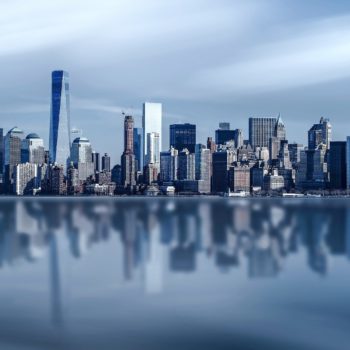

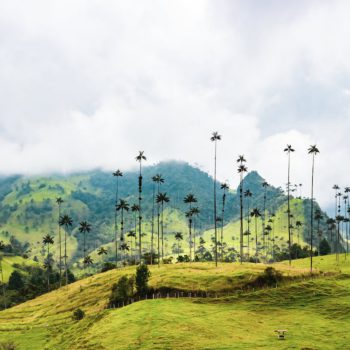



No Comments